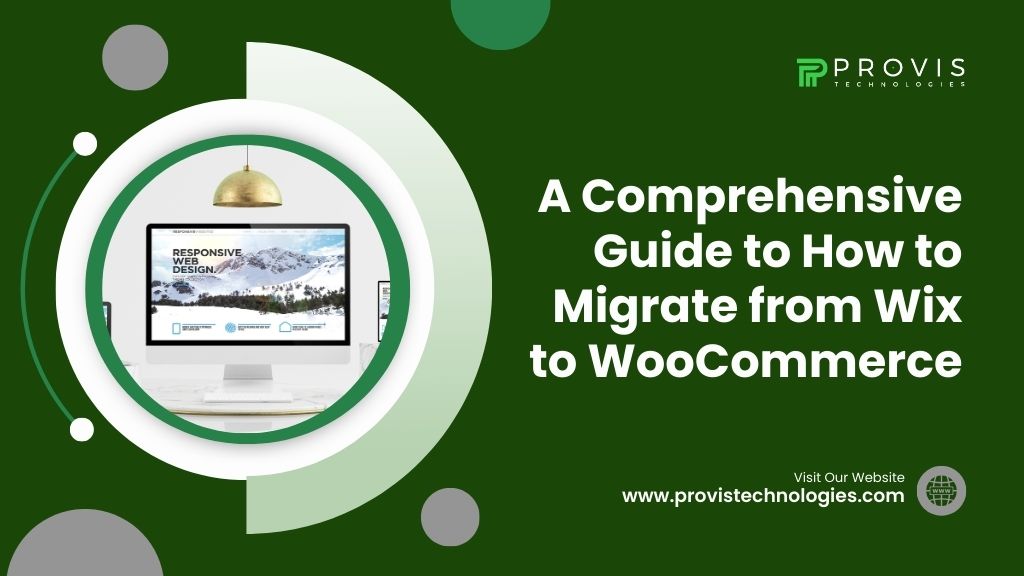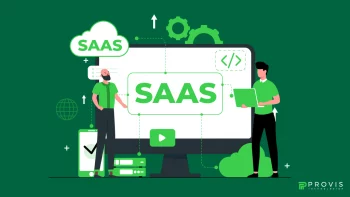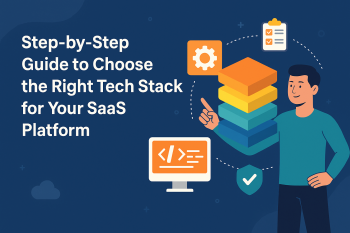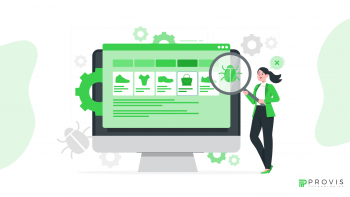Wix to WooCommerce Migration
Wix & WooCommerce are popular e-commerce platforms for creating & running online stores. Wix is an all-in-one website builder that offers built-in e-commerce functionality. On the other hand, WooCommerce is a plugin for WordPress that provides extensive customization options for creating e-commerce websites.
Reasons for migrating from Wix Stores to WooCommerce
There are several reasons why businesses may choose to migrate from Wix Stores to WooCommerce. These reasons include the need for more advanced customization options, better integration with WordPress websites, access to a range of plugins & extensions, and the desire for greater flexibility & scalability.
Planning the Migration
Assessing your current website & store setup
Before migrating from Wix to WooCommerce, it’s essential to assess your current website and store setup. This includes evaluating your existing design, layout, features, and functionalities to determine what needs to be migrated and how it will fit into the new WooCommerce environment.
Identifying necessary features & functionalities
This may include product listings, categories, payment gateways, shipping options, customer accounts, and order management tools. Determine which features are critical for your business and prioritize them during migration.
Setting migration goals & timelines
Set clear migration goals and timelines to ensure a smooth transition. Define specific objectives, such as completing the migration within a certain timeframe, minimizing downtime, and preserving data integrity. Establishing realistic goals and timelines will help keep the migration project on track and ensure that milestones are achieved.
Setting Up WooCommerce
Choosing a hosting provider & installing WordPress
Choose a reliable hosting provider like Provis Technologies that offers optimized hosting solutions for WordPress websites. Install WordPress on your hosting server and configure it according to your requirements. WordPress will serve as the foundation for your WooCommerce store, providing a flexible and scalable platform for building and managing your e-commerce website.
Installing & configuring the WooCommerce plugin
Install the WooCommerce plugin on your WordPress website and configure it to suit your business needs. WooCommerce offers a range of settings and options for customizing your store, including product settings, payment gateways, shipping methods, tax rates, and more. Configure WooCommerce to align with your existing store setup and migration goals.
Setting up payment gateways & shipping options
Configure payment gateways and shipping options to enable customers to shop and receive orders smoothly. WooCommerce supports a variety of payment gateways, including PayPal, Stripe, and Square, as well as popular shipping carriers like UPS, FedEx, and USPS. Choose the payment gateways and shipping options that best meet your business requirements and provide a convenient shopping experience for your customers.
Exporting Data from Wix Stores
Exporting product information
Export product information from your Wix Stores account, including product names, descriptions, prices, and images. This data will be transferred to your WooCommerce store to populate product listings and pages. Ensure that product images and descriptions are exported in a format compatible with WooCommerce.
Exporting customer data
Export customer data, including customer names, email addresses, shipping addresses, and order history. This data will be imported into WooCommerce to maintain customer records and order information. Export any other relevant data, such as inventory levels, discounts, and promotions, that you wish to transfer to your WooCommerce store.
Exporting blog posts, pages, and other content
If you have blog posts, pages, or other content on your Wix website, export this content for migration to your WooCommerce store. This may include blog articles, About Us pages, contact information, FAQs, and more. Export content in a format compatible with WordPress to facilitate seamless integration with your WooCommerce store.
Importing Data into WooCommerce
Importing product data using CSV or XML files
Import product data into WooCommerce using CSV or XML files from your Wix Stores export. WooCommerce provides tools for importing product data, including built-in importers and third-party plugins. Map the fields in your import file to the corresponding fields in WooCommerce to ensure that product information is imported accurately.
Importing customer data & order history
Import customer data and order history into WooCommerce using CSV or XML files exported from Wix Stores. WooCommerce offers import tools for migrating customer records and order information, ensuring that customer accounts and past orders are preserved during migration. Map the fields in your import file to the appropriate fields in WooCommerce to maintain data integrity.
Importing content from the Wix blog & pages
If you have blog posts, pages, or other content on your Wix website, import this content into WordPress for integration with your WooCommerce store. WordPress provides tools for importing content from various sources, including Wix, allowing you to migrate your existing content smoothly. Ensure that imported content is formatted correctly and aligned with the design and layout of your WooCommerce store.
Don’t Miss:- Wix or WooCommerce A Complete Guide to Choose the Right E-commerce Platform for You
Designing & Customizing Your WooCommerce Store
Choosing a WooCommerce-compatible theme
Choose a WooCommerce-compatible theme for your online store that reflects your brand identity and meets your design requirements. WordPress offers a wide range of themes specifically designed for WooCommerce with customizable layouts, color schemes, and typography options. Choose a responsive & user-friendly theme for performance to provide a smooth shopping experience for your customers.
Customizing the design & layout of your store
Customize the design and layout of your WooCommerce store to align with your brand image and customer preferences. WordPress & WooCommerce provide tools for customizing your store’s appearance, including built-in customization options and third-party plugins. Customize the homepage, product pages, category pages, and checkout process to create a unique and engaging shopping experience for your customers.
Adding custom features & functionalities as needed
Enhance your WooCommerce store with custom features and functionalities to meet the specific needs of your business. WordPress and WooCommerce offer a variety of plugins and extensions for adding new features, such as advanced product search, product recommendations, customer reviews, and more. Choose plugins that integrate smoothly with WooCommerce and enhance the functionality of your store without compromising performance or security.
Testing & Quality Assurance
Testing phase
Test the functionality & usability of your WooCommerce store, including product pages, category pages, checkout process, and other critical functionalities. Perform thorough testing to identify any issues or discrepancies and ensure that the store functions as expected. Don’t forget to check responsiveness by testing on different devices.
Checking data integrity & accuracy after migration
Verify the integrity and accuracy of data imported into WooCommerce, including product information, customer records, order history, and other relevant data. Compare imported data with the original source to ensure all information has been transferred correctly. Address discrepancies or errors if identified during data validation to maintain data integrity.
Addressing any issues identified during testing
Address any discrepancies identified during testing and quality assurance to ensure a smooth transition to WooCommerce. Troubleshoot technical issues, resolve functionality gaps, and make any necessary adjustments to optimize the performance and usability of your WooCommerce store. Test again after making changes to confirm that the issues have been resolved satisfactorily.
Redirecting URLs & Setting Up 301 Redirects
Redirection
Redirecting old URLs from Wix to corresponding pages on WooCommerce
Set up 301 redirects to redirect traffic from old URLs on your Wix website to corresponding pages on your WooCommerce store. This ensures visitors who access your website through old links or bookmarks are automatically redirected to the appropriate pages on your new WooCommerce store. Create redirects for product pages, category pages, blog posts, and other relevant content to preserve SEO equity.
Testing redirects
Test 301 redirects to ensure proper functionality & accuracy. Verify that old URLs are redirected to the correct pages on your WooCommerce store and that the redirection process is smooth and transparent to users. Monitor website traffic and search engine rankings after implementing redirects to confirm that they are working as expected. Make any necessary adjustments or corrections to ensure all redirects are functioning correctly.
Read Out: – Why is 2024 a Great Year to Start Your E-commerce?
Optimizing SEO & Performance
SEO optimization
Optimize product pages, meta titles, descriptions, and URLs for SEO to improve your store’s visibility and rankings in search engine results. Use relevant keywords, descriptive meta tags, and SEO-friendly URLs to optimize product listings and attract organic traffic. Implement best practices for on-page SEO, such as using descriptive headers, optimizing image alt text, and creating unique, high-quality content.
Implementing performance optimizations
Implement performance optimizations to enhance the speed and responsiveness of your WooCommerce. Use caching mechanisms to reduce server load and improve load times for visitors. Compress images to minimize file sizes and reduce bandwidth usage, optimizing the performance across devices & networks. Implement other performance optimizations, such as lazy loading, browser caching, and CDNs – to further enhance the speed & performance of your WooCommerce store.
Setting up SEO plugins & tools to monitor performance
Set up SEO plugins and tools to monitor the performance of your WooCommerce store and track its rankings in search engine results. Use tools like Google Analytics and Google Search Console to analyze website traffic, monitor user behavior, and track keyword rankings. Install SEO plugins like Yoast SEO or Rank Math to optimize your store’s SEO settings, generate XML sitemaps, and monitor on-page SEO elements. Use these tools and plugins to identify opportunities for improvement and make data-driven decisions to optimize your WooCommerce for search engines.
Training & Education
Training staff on how to manage & update the WooCommerce store
Provide training and education to staff members responsible for managing and updating the WooCommerce store. Train the teams to use the WordPress dashboard, navigate WooCommerce settings, manage product listings, process orders, and perform other essential tasks. Provide hands-on training sessions, tutorials, and documentation to help staff members become proficient in using WooCommerce effectively.
Providing resources & documentation
Provide resources & documentation to support ongoing maintenance and support for the WooCommerce store. Create user manuals, guides, and FAQs to address common questions and issues for managing and maintaining the store. Provide access to online resources, forums, and support communities where staff members can find additional help and assistance.
Offering tutorials & guides for WooCommerce
Offer tutorials and guides to help staff members learn how to use WooCommerce features effectively and maximize their productivity. Create step-by-step tutorials and video guides covering various aspects of WooCommerce, such as adding products, managing orders, configuring settings, and troubleshooting common issues. Offer hands-on training sessions and workshops for practical experience.
Must Know:- WooCommerce vs Shopify Which is Best for Your E-commerce in 2024?
Post-Migration Monitoring & Support
Monitoring website performance & user feedback after migration
Monitor website performance and user feedback after migrating from Wix Stores to WooCommerce. Track key performance metrics, such as page load times, bounce rates, and conversion rates, to assess the impact of the migration on the store’s performance. Gather user feedback through surveys, reviews, and customer support interactions to identify any issues or concerns and address them promptly.
Addressing any post-migration concerns
Address any post-migration issues or concerns that arise after transitioning to WooCommerce. Investigate and troubleshoot technical issues, functionality gaps, or performance issues affecting user experience or website performance. Communicate with stakeholders, including staff members and customers, to keep them informed and involved in the resolution process.
Providing ongoing support
Provide ongoing support and assistance to ensure a smooth transition to WooCommerce and address any lingering issues or concerns. Offer technical support, troubleshooting assistance, and guidance to staff members and customers as needed. Keep stakeholders updated on the progress of post-migration efforts and communicate any changes or updates to the store’s functionality or performance.
Bottom Line
Migrating from Wix Stores to WooCommerce involves careful planning, execution, and optimization to ensure a successful transition. By following the steps outlined in this guide, businesses can migrate their online stores smoothly and take advantage of the advanced customization options, flexibility, and scalability offered by WooCommerce.
WooCommerce provides businesses with a powerful platform for building and managing e-commerce websites. With its extensive customization options, robust features, and integration with WordPress – WooCommerce offers unparalleled flexibility and scalability for businesses of all sizes. By migrating to WooCommerce, businesses can unlock new growth opportunities. E-commerce development agencies like Provis Technologies provide migration services for flawless migration.
FAQs
What is WooCommerce?
WooCommerce is a popular e-commerce plugin for WordPress websites, offering extensive customization options and features for creating and managing online stores.
How do I migrate from Wix Stores to WooCommerce?
To migrate from Wix Stores to WooCommerce – you need to export your data from Wix, set up a WooCommerce store on WordPress, import the exported data into WooCommerce, customize your store, and test for functionality & performance. Or you can also approach e-commerce development agencies like Provis Technologies for the same.
What data can be migrated from Wix Stores to WooCommerce?
You can migrate various types of data from Wix Stores to WooCommerce, including product information, customer data, order history, blog posts, pages, and other content.
Do I need technical skills to migrate to WooCommerce?
While some technical knowledge may be helpful, you don’t necessarily need advanced technical skills to migrate to WooCommerce. Tools, plugins, and resources are available to assist with the migration process, and you can also seek professional help if needed.
Will my SEO rankings be affected by migrating to WooCommerce?
Migrating to WooCommerce may temporarily affect your SEO rankings due to changes in URLs and site structure. However, with proper planning and implementation of 301 redirects, you can minimize the impact on SEO and preserve your website’s search engine rankings.
What support options are available for WooCommerce?
WooCommerce offers various support options, including documentation, tutorials, forums, and community support. Moreover, you can also seek help from professional developers, agencies, or WooCommerce experts for specialized assistance and support.
Written By
Author's Picks
- Wix or WooCommerce A Complete Guide to Choose the Right E-commerce Platform for You
- 23/02/2024
- A Step-by-Step Guide to Migrate from Shopify to WooCommerce
- 12/03/2024
- WooCommerce vs Shopify Which is Best for Your E-commerce in 2024?
- 22/03/2024
Categories
- AI for Startups
- AI in Web Development
- AI Integration
- AI Platforms
- AI Prompt
- AI Tools
- AI Trading Software
- Android App
- Android vs iOS Development
- Angular
- API
- API Development
- App
- app development
- App Idea
- App User Feedback
- Application
- Artificial Intelligence
- Audit Services
- Automotive Industry
- Awards and Recognition
- Business Consulting
- Business Website
- Chatbots
- CRM
- CRM for Financial Advisors
- Custom CRM
- Custom SaaS
- Custom Website
- Customer Service
- dashboard design
- Developing a Mobile App
- Digital Business
- E-commerce
- EMR Integration
- Finance
- Financial Advisors
- Financial Advisors
- GIT
- Health Insurance
- iOS App
- iOS App Development
- IoT Mobile App Development
- IoT Platforms
- IT Audit Services
- IT Consulting
- IT Strategies
- Java Development
- Laravel
- Lean Canvas
- Learning Management System
- Logistics Apps
- Mobile App Development
- MVP
- Native App
- News Aggregator Site
- OTT
- Outsourcing IT
- Payment Gateway
- predictive analysis
- Product Launch Strategy
- Progressive Web App (PWA)
- Prototype
- Recommender Systems
- Ruby
- SaaS
- SaaS Application
- SaaS Business
- SaaS Company
- SaaS Development
- SaaS Product
- SaaS Project
- Sales Funnel
- SEO
- Shopping Cart
- Software Development
- SSL and TLS
- Startup Checklist
- Technology
- Tetradic Color Scheme
- UI/UX Design Company
- Unit Testing
- User Flow
- User Testing
- Web Development
- Web Performance Optimization
- website Maintenance Services
- Website Migration Service
- Website Speed Optimization
- WooCommerce
- WordPress





